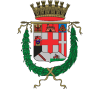The Renaissance Garden and Biodiversity Garden are joined by a new exhibition centre, where a significant selection of the University of Padua’s historical heritage, until now employed principally for research and teaching purposes and not open to visitors, is presented to the public for the first time. Between botany and medicine, those visiting the Museum can discover the history of the Botanical Garden, its plants and the people who collected them, in a journey through the centuries, from when it was founded to cultivate and study medicinal plants up to the 20th century.
Of particular interest among the botanical collections featured, dating mainly from the 19th and early 20th centuries, is the historical herbarium, an extraordinary archive of plant biodiversity with around 800,000 specimens of dried plants, algae, fungi and lichens, together with 16,000 phials containing the seeds of food, medicinal and ornamental species, illustrative plates from the 19th century, models of fungi and cross-sections of woods. As they pass through the 500 square metre area curated by scientific director Elena Canadelli, visitors also encounter a chaste tree dating back to the end of the 16th century and first editions of volumes that have written the history of botany and medicine (from Vesalius to Mattioli, Berengario da Carpi and Alpini).After almost 500 years since its foundation, the Botanical Garden now also hosts the dispensary the physician Francesco Bonafede would have liked to see active as early as 1545. This late 18th century pharmacy was donated to the University by the pharmacist Giuseppe Maggioni, with its instruments, preparations and medicines spanning at least three centuries of pharmaceutical and medical history. An immersive environment where visitors can discover the apothecary’s everyday life through a video.
The exhibition illustrates the Botanical Garden’s rich network of plant and seed exchanges, making it an important centre for the introduction and cultivation of medicinal, food and ornamental plants from various parts of the world. Visitors can retrace the story by admiring the herbarium collections, but also through interactive experiences such as Botany without frontiers, where they encounter people and places, and the Illustrated history, which retraces the history of medicine and botany in 12 stages, also including Padua, or the game that encourages them to guess the plants introduced to Italy for the first time and the protagonists from Padua whose names are still today borne by entire genera of plants dedicated to them.
The Museum helps visitors bring together the most important elements of the Botanical Garden, broadening their view to also include the history of botany and medicine, getting to know the protagonists and discovering more about the dialogue between the Renaissance geometries of the Historical Garden, the greenhouses of the Biodiversity Garden inaugurated in 2014 and the rich heritage of archives and books preserved on the first floor of the building in the new “Vincenzo Pinali and Giovanni Marsili Historic Library of Medicine and Botany”












